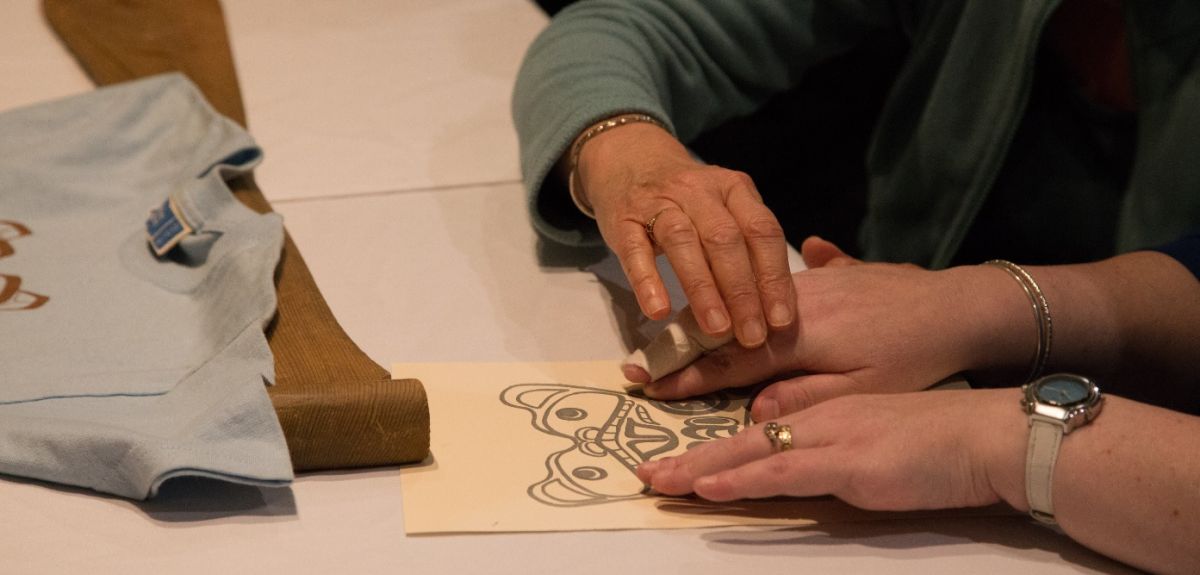
Oxford University Museums
New project to improve museum experience for blind or partially sighted people
A new joint project between the Oxford e-Research Centre and Oxford University Museums will develop multisensory tools to help enable blind or partially sighted people (BPSP) to engage in a more accessible and meaningful way with the collections in Oxford University's museums.
The project, which began in September 2016, is working with local BPSP communities to help develop the tools.
With about two million people registered blind or partially sighted in the UK, this project could greatly improve the museum experience for a lot of people.
‘I get really frustrated when I go to a museum and there’s no way to experience it,’ says Mrs Pamphilon, who runs a social group for visually impaired people in Oxfordshire. ‘Having things you can touch and feel just opens up a new world.’
To tackle this issue, museums internationally are experimenting with solutions to improve BPSP access to 2D and fragile 3D art (for example a recent exhibition in Spain's Prado Museum which invited blind and partially sighted people to touch specially-created copies of works by masters such as El Greco and Francisco Goya).
The 18 month collaboration, funded by the University's IT Innovation Fund (now IT Innovation Challenges), aims to further develop the touch tile approach, using techniques such as 3D printing to improve the touch elements of the tile, and using cheap and simple technology such as Raspberry Pi to deliver pre-recorded audio descriptions.
This should decrease the cost to museums of giving BPSP an experience more akin to that of the majority of museum visitors, and therefore increase availability and accessibility for BPS visitors.
The aim is to allow BPSP visitors to engage with both 2D and 3D artworks intuitively, dipping in and out and being able to select the part of the audio description they are interested in (rather than being restricted to a fixed linear recording).
Susan Griffiths, Community Engagement Officer at Oxford University Museums, says, "Our aim is to create a tool that can allow blind and partially sighted people to independently engage with some of the world famous visual arts held by the Oxford University Museums, in particular the Ashmolean.’
Strand one of the project, led by the Museums with support from Dr Torø Graven (Department of Experimental Psychology), will focus on understanding the tactile sensations that can be used to assist BPSP to experience the tiles (e.g. line fineness, texture of lines and surfaces, shape of features such as curves and angles, use of colour for partially sighted people), what kind of audio description should accompany the tiles and how it should be activated. The team will research existing approaches being taken by other museums, arts organisations, companies and BPS groups, with whom the Museums already have strong links.
The R&D strand, to be led by Iain Emsley, Research Associate at the e-Research Centre, will determine how best to develop cheap and efficient methods of creating touch tiles that can provide the tactile sensations identified in strand one. It will also develop practical and replicable approaches to integrating audio delivery into the touch tiles.
Thirdly, the project team will select works of art from the Ashmolean's Western Art collection to prototype and user-test the technology. Learnings from this will be used to fine tune the user experience and gain a deeper understanding of the impact of this technology on the BPSP experience of visual art. At the end of the prototyping phase an installation of the touch tiles in the Ashmolean Museum will allow testing and evaluation with BPSP visitors in a real-world environment.